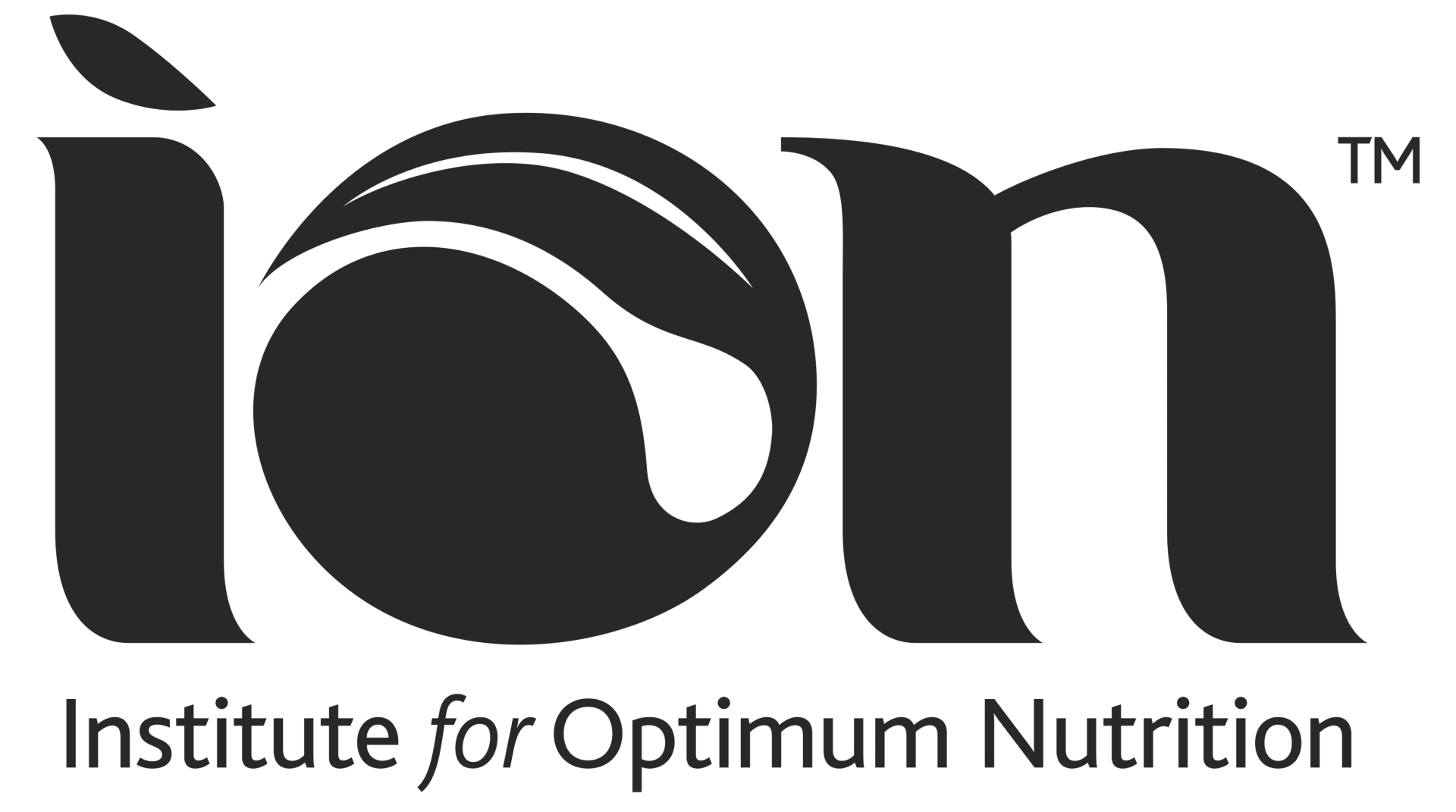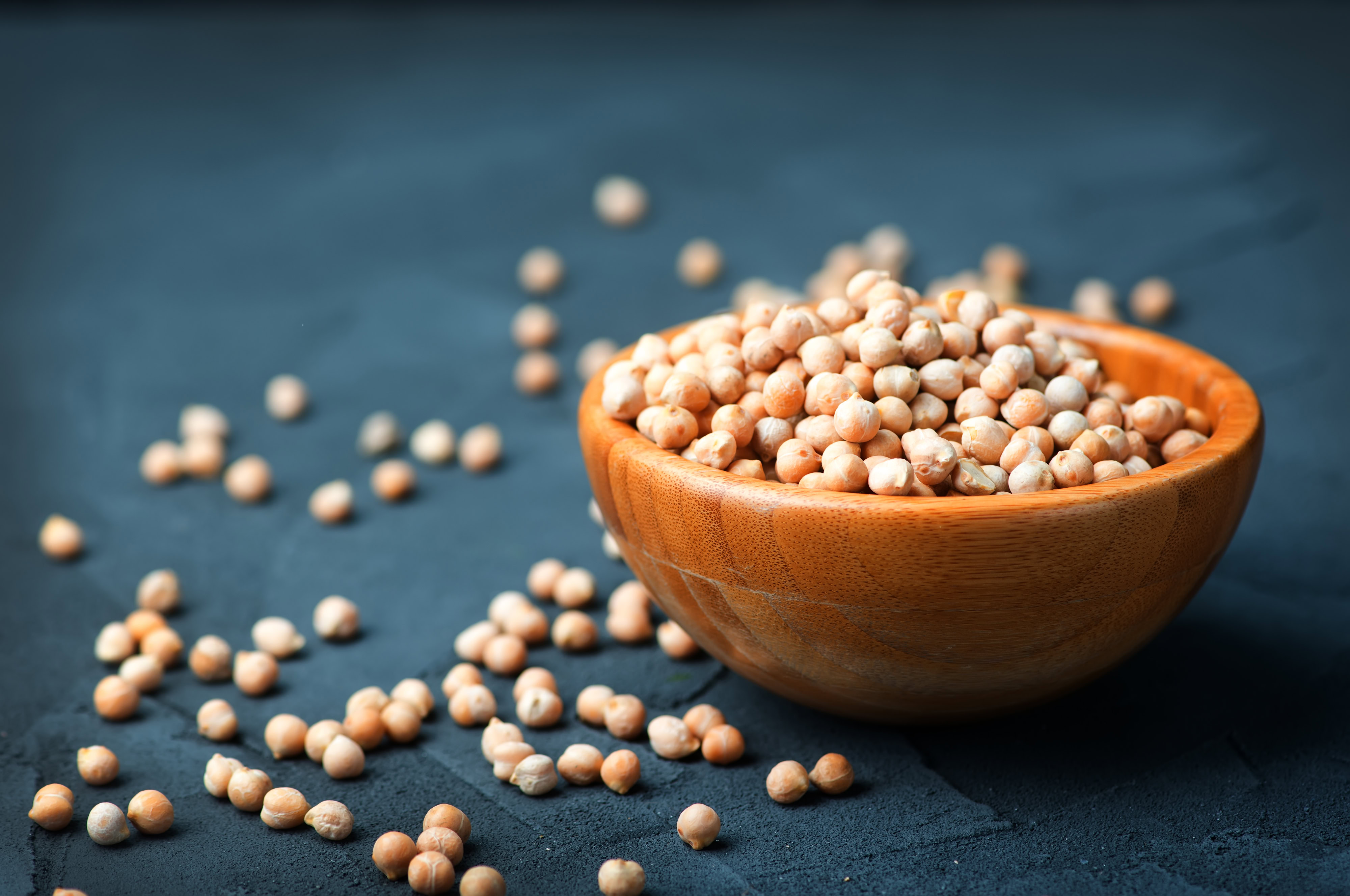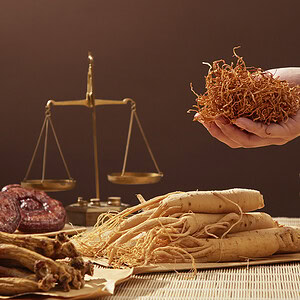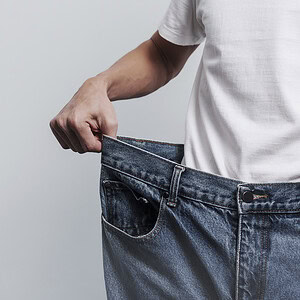Chickpeas are a firm favourite of the Optimum Nutrition team. Here’s why – by Judith Orrick.
1. So simple
Nutritious and affordable, chickpeas (garbanzo) boast a five year shelf life if tinned and two years if dried.
They’re especially comforting for winter warmers such as soups, casseroles, tagines, curries or even a warm winter salad.
Enjoy them in snacks and side dishes, or use them as chickpea flour in baked goods such as pancakes (socca), or bread (farinata).
2. Feel full
As pulses (the edible seeds of leguminous plants), chickpeas, along with beans and lentils, are classified as both protein and vegetable.
Nutritionally, chickpeas come packed with complex carbohydrates that can help to keep us feeling fuller for longer, as well as protein, fibre, vitamins and minerals.
3. Nutritionally rich
Hummus (an Arabic word for chickpea) contains dietary fibre, healthy fats from tahini and olive oil (with traditional recipes), vitamins A, C and E, folate, magnesium, potassium and iron.
It has also been positively associated with weight management, glucose and insulin regulation, and health markers associated with heart health.
Look for brands that contain olive oil, rather than sunflower oil which is high in omega-6 fatty acids.
Whip up a batch at home using mashed chickpeas, tahini, olive oil, lemon juice, garlic, salt and paprika. One can of chickpeas will produce a large batch so freeze for later use.
Once defrosted, drizzle over some extra virgin olive oil — or truffle oil for something a little different.
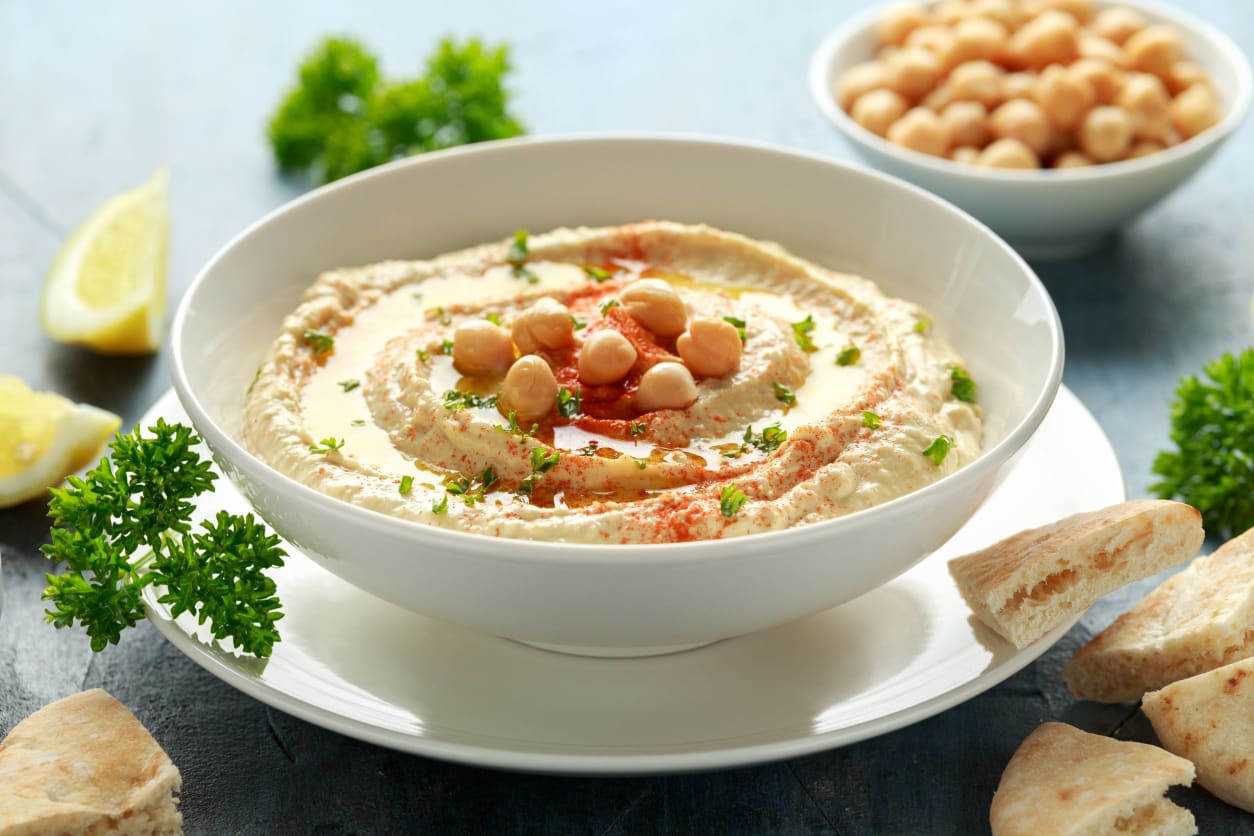
4. Good for the gut
Dietary fibre supports gut health, feeds friendly bacteria and helps prevent constipation. Because we lack the enzymes to break down insoluble fibre, it can’t be absorbed and so is fermented by bacteria in the colon instead, where flatulent gas might result.
Chickpeas are high in fibre, with the smaller Desi variety being higher in dietary fibre than the larger Kabuli variety.
To avoid discomfort (and limit embarrassment) allow your gut’s friendly bacteria time to adjust by adding fibre-rich foods slowly over a few weeks. And because fibre expands, stay hydrated to keep it moving through the gut.
5. Vegan meringue
‘Aquafaba’ became a social media sensation when bloggers started turning the liquid from canned chickpeas into meringues and mayonnaise.
Aquafaba (bean water) is a viscous, starch- and protein-rich liquid which acts as a thickener, capable of making a stable foam or emulsion.
Good news for egg-allergics and vegans, but it does take a lot of beating so an electric whisk is recommended!
For best results, it’s worth noting researchers produced superior foam stability and volume when cans had more chickpeas, less aquafaba, and more viscosity. Salt also reduced the foam’s stability. If your aquafaba is too liquid, reduce it down first on the stove.
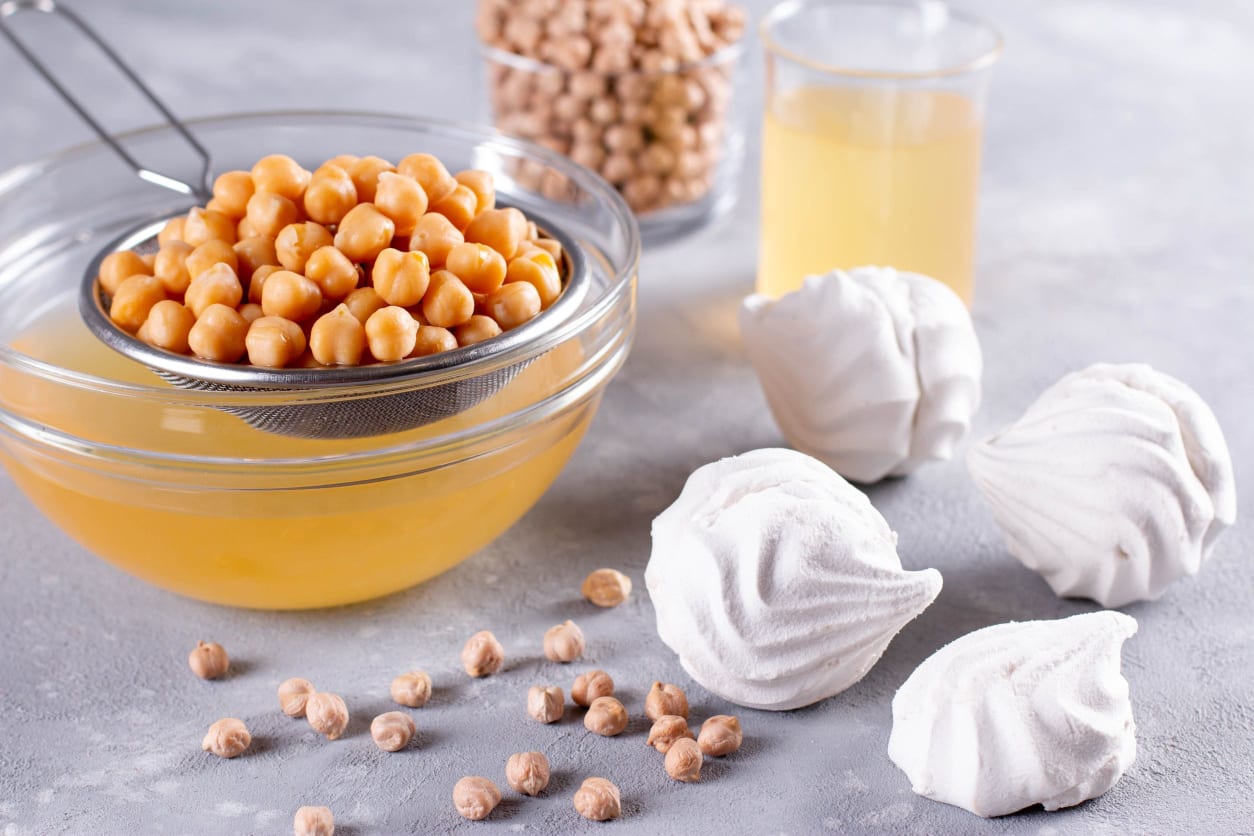
6. Preparation
Canned chickpeas are cooked and ready to go — simply drain and rinse to remove any salt.
Dried chickpeas need to be soaked for at least 10 hours before being cooked for about 50 minutes; but these can offer a fresher, nuttier taste and texture. Throw away the soaking water as this contains traces of insoluble fibre, which can contribute to flatulence.
Chickpeas can triple in volume while cooking, so ensure there’s adequate fresh cooking water, and simmer slowly to avoid splitting.
Cooked pulses store for 1-2 days in the fridge or up to three months in a freezer.
7. Protein
Chickpeas are high in protein, with some studies reporting up to 30% of their dried weight.
However, unlike animal protein or plant protein (from quinoa, chia or soya), chickpea protein is not ‘complete’ because it does not contain all of the essential amino acids that are the building blocks of protein.
But, by adding chickpeas to other incomplete sources of protein, such as brown rice, it’s possible to combine amino acids to achieve a balanced intake.
Enjoyed this article?
Check out this roasted chickpea recipe
For articles and recipes subscribe to Optimum Nutrition
Discover our courses in nutrition
